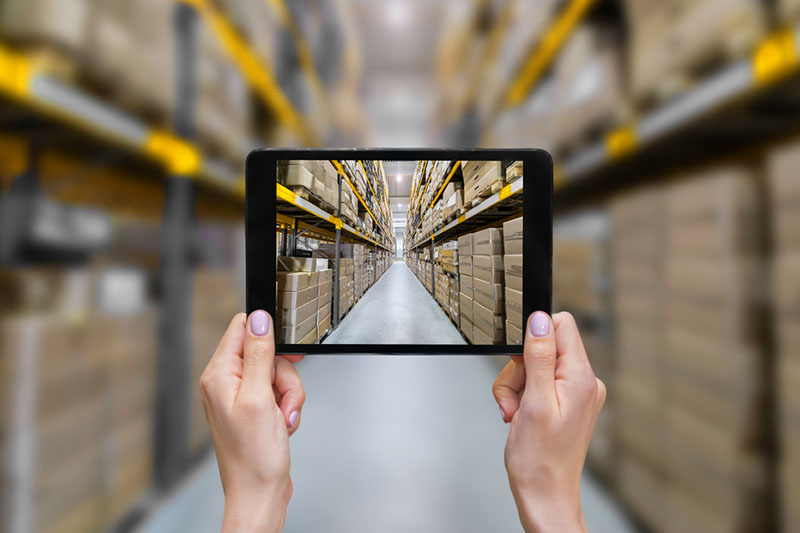5 Ways to Accelerate Your Competitive Advantage By Getting Smarter With Supply Chain Data
Working with a 3PL can help you unlock new opportunities and solve major supply chain challenges through predictive analytics and machine learning.
When you think of leading-edge data analytics, major technology companies such as Google and Facebook inevitably come to mind. You may not realize it, but DHL Supply Chain deserves to be included in that list. The advances DHL Supply Chain is making in uncovering, analyzing and utilizing data are transforming the supply chain–not to mention delivering substantial benefits and ROI to our customers.
As the supply chain continues to become more sophisticated and digitalized, data analytics is evolving into a powerful tool helping companies achieve greater supply chain visibility, flexibility and resiliency.
The challenge many companies have is adequately identifying, prioritizing and acting on the data to deliver measurable, obtainable business goals and value…and ultimately, predictive insight. Most are barely scratching the surface when it comes to the business value that can be achieved through establishing data analytics processes.
Whether they are tracking the wrong data, or they do not have enough data or the right expertise to effectively analyze the data, many companies are missing vital opportunities to harness the power of data to solve their complex supply chain challenges. A third-party logistics (3PL) provider, like DHL Supply Chain who leads the industry in data analytics, can help.
Effectively Using Data to Break Through Supply Chain Challenges
Following are five areas where DHL Supply Chain is using predictive analytics and machine learning to unlock new opportunities and solve major supply chain challenges.
1.) Labor
Demand for supply chain talent continues to be a serious challenge, with companies struggling to identify and attract qualified candidates. DHL Supply Chain is using data analytics to help companies improve resource planning to ensure they have the skilled labor they need.
One of the ways we are doing this is by focusing on data that can help bring a greater understanding of the attributes associated with employee turnover. For many of our customers, we estimate that the cost of turnover per associate can be as high as $4,000. We analyze a variety of public and private data points to understand what is causing the turnover at a micro and macro level. This understanding enables us to recommend strategic changes at a high level and even run varying scenarios to discern which changes might be most effective.
2.) Peak Planning
No matter how much companies try to proactively predict and prepare for peak demand, it often isn’t enough. As soon as the volume hits, companies inevitably fall back into a reactive state, trying to figure out which items are in demand and moving those products from reserve to active areas.
DHL Supply Chain created a machine learning model that learns from past and current peak seasons to enable customers to make decisions more effectively on inventory inside the warehouse. The model incorporates a variety of internal and external factors, such as inventory levels, product demands, the rate of incoming inventory, buying patterns, economic forecasts and consumer trends so companies can better position inventory to meet customer demands as they change or intensify.
3.) Reducing Errors in the Warehouse
There are a number of opportunities to improve operational efficiency in the warehouse through greater visibility and predictive analytics. For instance, at DHL Supply Chain, we are using machine learning to reduce error rates associated with cycle counts. This cycle count predictive model has proven to ensure that actual inventory counts match what is listed in the system.
The model gathers data from the WMS on all historical cycle count tasks, combining it with a number of other data points that include product information, location and transactions. It then learns why the errors are happening and is even able to predict the locations where errors might occur. This information is then used to identify and change those processes that might be leading to the errors, increasing the accuracy of the cycle count and ensuring products are available when consumers want them.
4.) Greener Transportation
One of the ways DHL Supply Chain is bringing additional success to supply chain sustainability initiatives is by using the EPA’s SmartWay program to help logistics and supply chain managers prioritize efficiency in their carrier choices. By scoring carriers on their emissions and environmental impact, the program helps companies identify and select more efficient freight carriers, transport modes, equipment and operational strategies to improve supply chain sustainability and lower costs.
DHL Supply Chain also uses proprietary algorithms we developed with SmartWay to drive more freight to better performing carriers. We can run predictive scenarios for our customers to show them how much it would cost–and how much CO2 they’d save–to transition to a SmartWay-rated carrier. We can also track actual performance of that decision over time.
5.) End-to-End Supply Chain Visibility
The MySupplyChain portal from DHL Supply Chain brings together data from various platforms across the supply chain to help cut through the clutter and highlight the data needed to reach objectives and achieve supply chain visibility. Users no longer have to access and interpret disparate systems to navigate supply chain demands and analytics.
The platform allows customers to access track-and-trace data, inventory, operational performance and reporting, business analytics, customer service and more, providing end-to-end visibility of global supply chain operations. With this complete view of network-wide inventory positions and warehouse-level order statuses, customers can leverage up-to-date data to identify insights that drive continuous improvement and competitive advantage.
To learn more about how DHL Supply Chain can use data to help you break through your supply chain barriers, visit http://app.supplychain.dhl.com/e/er?s=1897772577&lid=9914.













